
Papillon Grand Canyon Helicopters - A View Like No Other

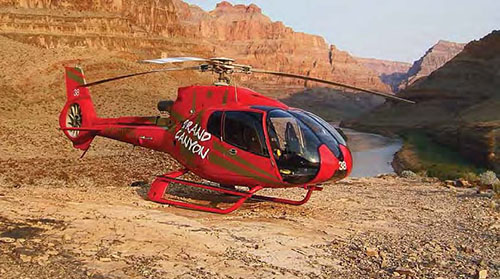
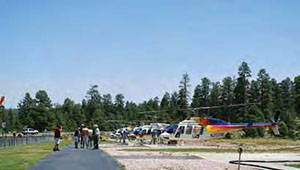
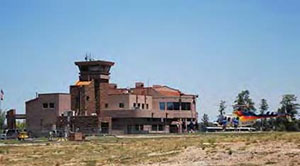
It’s one of the seven natural wonders of the world and may arguably be the most famous canyon in the world. Located about 80 miles north of Flagstaff, Ariz., it was designated a national park in 1919 by President Theodore Roosevelt. If you have never had the opportunity to see it up close and personal, the Grand Canyon truly is a grand sight. Winding its way for 227 miles along the Colorado River, it reaches a width of 18 miles and a depth of 6,000 feet. The canyon exposes nearly two billion years of the Earth’s geological history. It’s an ever-changing wonder as the Colorado River continues to erode the canyon into its present-day configuration. More than five million visitors a year come from across the globe to hike its trails and go rafting down the Colorado River, but can you imagine viewing this magnificent work of nature from the air? Papillon Helicopters staff members do it every day.
In The Beginning
The pipeline that crosses the Grand Canyon and which provides water to the South Rim is where Papillon’s story begins. Before becoming chairman of Papillon Airways, Elling Halvorson owned a construction company that specialized in projects located in high, logistically-remote areas. When the need arose for a pipeline to cross 13.5 miles of treacherous canyon terrain, Halvorson’s team seemed best suited for the job.
Though not expected to be an easy job, laying the pipe would require pioneering methods to ensure its completion. Halvorson decided to utilize helicopters to lower the pipe over a vertical mile into the canyon. Each day that workers and guests would fly to the project, the majestic scenery was so captivating they began requesting chartered helicopter flights. In 1965, Grand Canyon Papillon Helicopters was born.
In French, the word Papillon means butterfly and that is an apt name for a helicopter tour company. Since 1965, Papillon Helicopters has been the world’s oldest and largest sightseeing company, flying an estimated 600,000 passengers per year on its daily tours of the Grand Canyon. With more than 40 unique excursions that feature spectacular sights of the Hoover Dam, Lake Mead, Monument Valley, Page/Lake Powell and unforgettable views of the Grand Canyon, Papillon has been providing visitors a privileged perspective to one of the world’s greatest natural wonders.
Primarily designed for aircraft tours, many of the helicopters in the Papillon fleet feature vista windows and all offer pre-recorded narratives in 11 languages (12, including English) for passengers. Keeping all of these helicopters in flightworthy condition is the responsibility of Papillon’s director of maintenance Luis Garcia and his crew. HeliMx spoke with Garcia.
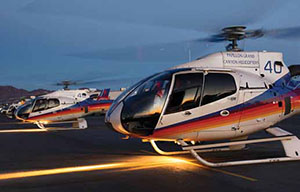 HeliMx - Hello, Luis. Flying 600,000 people a year on tours to see the Grand Canyon seems almost unbelievable! How many helicopters do you have in operation and how many flight hours per year are you flying?
HeliMx - Hello, Luis. Flying 600,000 people a year on tours to see the Grand Canyon seems almost unbelievable! How many helicopters do you have in operation and how many flight hours per year are you flying?
Garcia - As the DOM for our Part 135 flight operations, and accountable manager for Our Part 145 repair station, it does keep me busy. We currently are flying 43 helicopters that vary from the Bell 206L Series to Eurocopter B2, B3e and EC-130s. We are averaging about 41,000 flight hours per year across that fleet of helicopters.
HeliMx - How many bases are you responsible for?
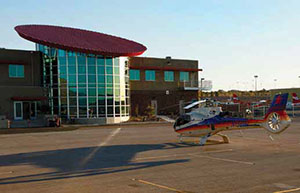 Garcia - Papillon offers Grand Canyon helicopter tours from four locations: Las Vegas, Grand Canyon South Rim and Grand Canyon West Rim, Ariz., and Boulder City, Nev. I’m responsible for all, but I have great maintenance staffs at both our South Rim and Boulder City operations that help me keep it all together.
Garcia - Papillon offers Grand Canyon helicopter tours from four locations: Las Vegas, Grand Canyon South Rim and Grand Canyon West Rim, Ariz., and Boulder City, Nev. I’m responsible for all, but I have great maintenance staffs at both our South Rim and Boulder City operations that help me keep it all together.
HeliMx - What are your typical hot and cold environments like with respect to temperature and MSL elevation?
Garcia - The South Rim is 6,850 feet MSL and can have temperature swings from -20 to 95 degrees, depending on the season. Boulder City is 2,400 feet MSL and can see swings from 34 to 110 degrees, again depending on the time of year.
HeliMx - Between all the helicopters and locations, how large is your maintenance department and how do you have them deployed?
Garcia - The maintenance department employs 40 certified technicians, one maintenance manager who runs our Southern Nevada operations, one chief inspector for South Rim Grand Canyon, two avionic technicians, eight quality control personnel, eight spares personnel and two administrative assistants. I have this structure in place to ensure commonality within the two bases. The personnel are split evenly between the two bases.
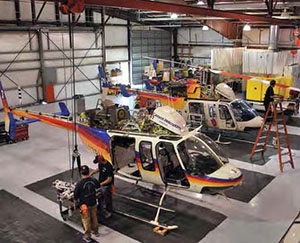 HeliMx - How many shifts do you operate?
HeliMx - How many shifts do you operate?
Garcia - It varies from base to base, but normally we have two shifts, a morning shift and an afternoon shift.
HeliMx – With the extremes in temperatures that you have to deal with throughout the year, do you have any special maintenance procedures in place to help you deal with them?
Garcia - When aircraft are operated in the Nevada desert, heat is the determining factor and for the South Rim of the canyon it’s the altitude. Believe it or not, it’s the same practices that have the same effects. For instance, the engines are subjected to a higher rate of compressor washes and oil changes. These simple practices have produced a positive effect on our engines reaching TBO. Additionally, Papillon has ensured the installation of engine inlet barrier filters which have saved many of our engines from FOD and erosion damage. The cost of just one event from either FOD or erosion would be enough to equip the entire fleet with barrier filters.
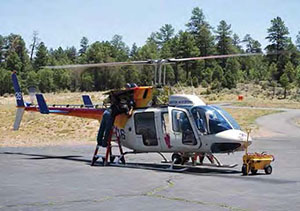 HeliMx - Do you have any lessons learned or tips you can share with our readers on a particular task that you found can improve on the maintenance process in the way of saving time, cost, materials, etc?
HeliMx - Do you have any lessons learned or tips you can share with our readers on a particular task that you found can improve on the maintenance process in the way of saving time, cost, materials, etc?
Garcia – Yes. One in particular stands out. I highly recommend the use of reinforced windshields on the EC-130 helicopter. These work great in our temperature extremes and help prevent the dreaded call of a cracked windshield. It is money well spent.
HeliMx – Has Papillon Helicopters started any initiatives with regard to implementing a safety management system (SMS?)
Garcia – We have been involved in the development of SMS that goes beyond the scope of the industry norm. We are always proactive and our system is ever evolving.
HeliMx – Last but not least, if you were looking to hire a new mechanic, aside from the basics of having an A&P license and some experience working on helicopters, what other skill sets are important to you?
Garcia – We are always looking for skilled maintenance professionals who are well versed in aircraft systems, but also in federal regulations. All too often we see personnel that only learn one side of their profession. Today, it is rare to find individuals that have a good grasp not only of their practical skills, but also of what the regulations require. In this regard, one of our missions is to mold our maintenance professionals into both the practical and regulatory side of their jobs. This will serve them well here at Papillon Grand Canyon Helicopters, but also wherever they may go in the aviation community.
The Grand Canyon yesterday, today and tomorrow draws people from all over the world to see its magnificent sights. Papillon Grand Canyon Helicopters is showing some of those folks the Grand Canyon as can only be seen from the air. They are giving them a view like no other.
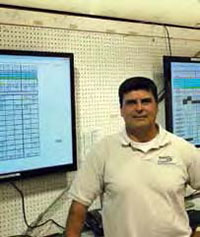 Garcia became a member of Papillon Grand Canyon Helicopters’ maintenance staff in April 1993. He received a Helicopter Association International scholarship, and Papillon providing Bell Factory schooling. Garcia became DOM in 2000. Many Papillon technicians receive a minimum of 200 hours of training per year. Learn more about Papillon at www.papillon.com
Garcia became a member of Papillon Grand Canyon Helicopters’ maintenance staff in April 1993. He received a Helicopter Association International scholarship, and Papillon providing Bell Factory schooling. Garcia became DOM in 2000. Many Papillon technicians receive a minimum of 200 hours of training per year. Learn more about Papillon at www.papillon.com
